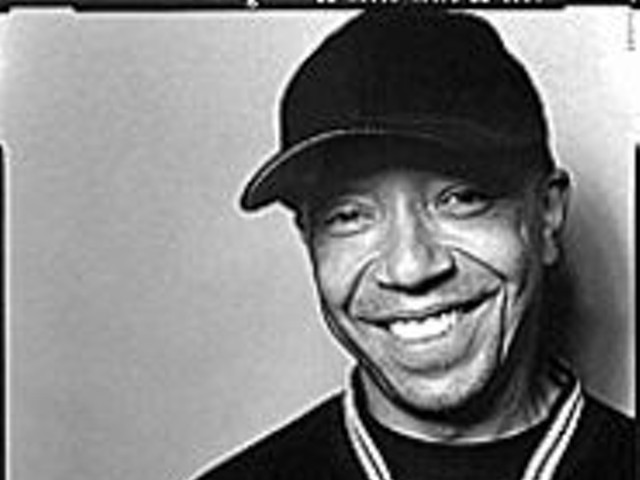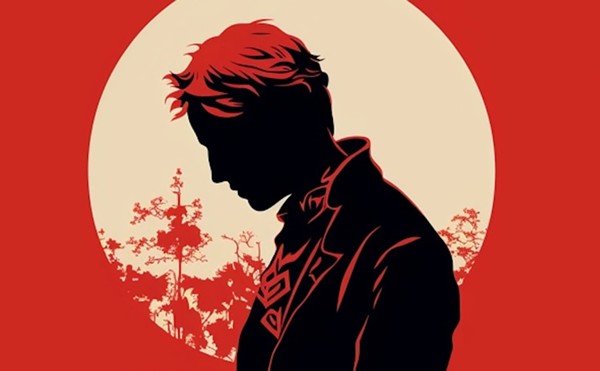But beyond the dollar signs, it's worth noting that artistically, until the final week's high-voltage 42nd Street, the season was mostly an exercise in grand bland. If the other productions didn't offer many exhilarating highs, well, maybe there weren't all that many excruciating lows either. After a viewer sees too many of these treadmill musicals, his judgment loses its edge. Indeed, it may well be that the mass dulling of audience sensibilities is often more intriguing than what's happening onstage. It is fascinating to observe the extent to which executive producer Paul Blake has been able to marginalize St. Louis theatergoers.
There once was a time when Muny productions debuted the week after Memorial Day and closed on the Sunday night before Labor Day. Week in and week out, St. Louisans were exposed to beloved classics, new Broadway hits, New York near-misses that warranted seeing anyway, kid-oriented fantasias. A ten-show season allowed for lots of variety -- and the result was that for many decades St. Louisans were the most knowledgeable musical-theater audiences west of New York.
That no longer can be said. Although Blake is not responsible for reducing the length of the season -- that occurred long before he arrived -- his steady diet of tapioca productions has desensitized the taste buds.
It didn't start out this way. After a spasmodic '89 season that couldn't even muster seven shows and included a gaping four-week hole in the middle, in 1990 Blake arrived in St. Louis with a carpetbag full of new ideas and energy. In his first season, he assembled a blend of old (Brigadoon; No, No, Nanette) and new (Jesus Christ Superstar). He brought back popular Muny veterans like Gretchen Wyler and began to develop his own cadre of performers like Joel Higgins and Victoria Mallory. He mounted a talent-packed Bye Bye Birdie with Tommy Tune and Ann Reinking.
Blake built his innovative second season around the centennial of Cole Porter's birth. His highly praised revue It's Delightful, It's DeLovely, It's Cole Porter (Kaye Ballard, Phyllis Newman, Steve Ross, Gretchen Wyler) was followed by Kiss Me, Kate with Higgins and Mallory. Later in the summer Michael Feinstein starred as Hans Christian Anderson. The season finale, My Fair Lady, featured an esteemed triad of actors: John Neville, Christine Andreas and Clive Revill. And a much-needed new sound system finally got installed.
It's tough to sustain that hare's pace. As the years passed and the seasons began to blend one into the next, perhaps Blake's energy and imagination began to wane. Creative revues like the Cole Porter tribute gave way to tripe like Hooray for Hollywood. Blake also began to tire of having to cast -- and then replace -- aging teen idols. Perhaps the "names" weren't delivering the increased box office their salaries required. Or perhaps St. Louisans just didn't want to see Davy Jones in Oliver! Whatever the reasons, by 1996 the presence of actors in Forest Park had all but evaporated. And why not? If a title alone could sell tickets, Blake's casting options were wide open.
That's when something suspicious began to occur. Although we all know that the Muny is located in Forest Park, it's almost as if for several weeks each summer the amphitheater gets magically transported to Santa Mira, California, the isolated desert town that got overtaken by pod people from outer space in Invasion of the Body Snatchers. Pod people lack brains, blood or even fingerprints. They feel no emotions -- no joy, no anger, no disappointment.
Surely pod people have begun to infiltrate Muny audiences. How else to explain the amiable response that has greeted so many recent productions? There used to be a time when a Show Boat without a Cap'n Andy, a South Pacific without an Emile de Becque, a Meet Me in St. Louis that changes the locale from Kensington Avenue to Dullsville, an Annie without an FDR or a Music Man without a music man would have angered, or at least irritated, discerning Munygoers; now those same audiences benignly smile and patiently wait for the shows to end so that they can rise to their collective feet in an obligatory, if unenthusiastic, standing ovation.
Not everyone in the audience is a pod person. (The woman who sits two rows in front of me most Monday nights is so flawlessly gorgeous, I suspect she's a Stepford wife.) But in recent seasons the numbers have been ever on the rise. No surprise there: In Body Snatchers the pods claimed their victims from among those who fell asleep -- and too many Muny productions definitely encourage the occasional snooze.
Of course, not even a pod person could fail to note that Breakfast at Tiffany's was below even the Muny's recent norm. Who had the bright idea of wedging yet another Paul Blake signature show into a summer schedule that couldn't find room for anything by Rodgers and Hammerstein, Lerner and Loewe, Irving Berlin, George Gershwin, Jerome Kern or Cole Porter? Muny executives would have us believe that the audience itself is to blame. How so? Because last summer's Muny attendees apparently voted in large numbers for that title.
Everyone who cares seriously about the Muny gets a good laugh at the mere mention of the annual Muny surveys. Subscribers are encouraged to believe that by voting in a two-stage, winnowing-down survey, they are participating in the Muny's stated "tradition of bringing you the shows you most want to see." Yet the survey results are never released. (Our request to see last summer's tallies was refused.) So not only are those results dubious, but so too is the very makeup of the lists, which carefully omit most musicals that don't fit into Blake's mass-audience, we've-staged-it-before-so-let's-stage-it-again mentality. Instead audiences are asked to rubber-stamp the umpteenth Oklahoma! or West Side Story.
What weary viewer, then, couldn't be excused for picking a fresh title like Breakfast at Tiffany's over something he'd seen time and again? Doubtless, if the Muny were to add American Idol to its surveys, that too would elicit a huge vote. Of course, there's no musical to back up American Idol, but that's a trifling concern; nor was there a musical to back up Breakfast at Tiffany's.
"There's a large group of wonderful shows that I love that [the Muny is] guaranteed to lose $100,000 or more on," Blake told the St. Louis Post-Dispatch last month, "shows like Kismet and The Pajama Game." But it's not simply 1950s musicals that he has discarded as money losers. Tony Award winners such as Cabaret and Applause have not been seen at the Muny in more than thirty years, The Wiz and Promises, Promises (two other Tony honorees) in more than twenty. New York hits including Barnum, Dreamgirls, Grand Hotel, Me and My Girl, Once Upon a Mattress, Ragtime and Titanic have never been staged in Forest Park.
Miraculously, Cabaret, Ragtime and Titanic all survived stage one of this summer's survey. But don't expect to see them next summer. Sky Masterson would bet on the likes of Funny Girl, Grease, The King and I, Hello, Dolly! -- all of which were staged in 1997 or '99. An even surer bet would be another dance-heavy musical in the winning tradition of last summer's Crazy for You or last week's 42nd Street. Watch for the return of Singin' in the Rain or Seven Brides for Seven Brothers, both of which appeared way back in 2000.
Surely we all want Blake to be able to revive some of those wonderful older shows that he says he loves. So here's a thought: The Muny has approximately 550 "guarantors" -- presumably the city's best and brightest (and often wealthiest) -- who supposedly are committed to underwriting the theater's financial losses. Why not ask that valued support group to reimburse his $100,000 loss? It divvies up to less than $200 per guarantor, certainly a small price to pay for love.
If Blake really wants to produce something apart from the tried-and-true (or a show he hasn't written himself), here's an even better idea: Why not look to the Great American Pastime for added revenues? The Muny and Busch Stadium share much in common: They're both open-air enterprises with a festive air; at both institutions vendors roam the concrete aisles, hawking beverages. The Muny even sells Cracker Jack. The Cardinals have ruthlessly succeeded in selling off nearly every aspect of the game to sponsors. How about putting the Muny naming rights on the block? The theater has already sold the stage to James McDonnell; why not sell the amphitheater? That could garner enough money for a decade of Pajama Games. How about finding a sponsor for that steady stream of announcements about cars whose headlights are left on? Or selling a Paul Blake bobblehead doll? The possibilities are limitless.
Of course, there's one significant difference between Busch Stadium and Forest Park. In baseball it's not enough to put bodies into the seats. The manager is expected to deliver a winning season. That expectation no longer holds true in the pod-infested world of the Muny.





